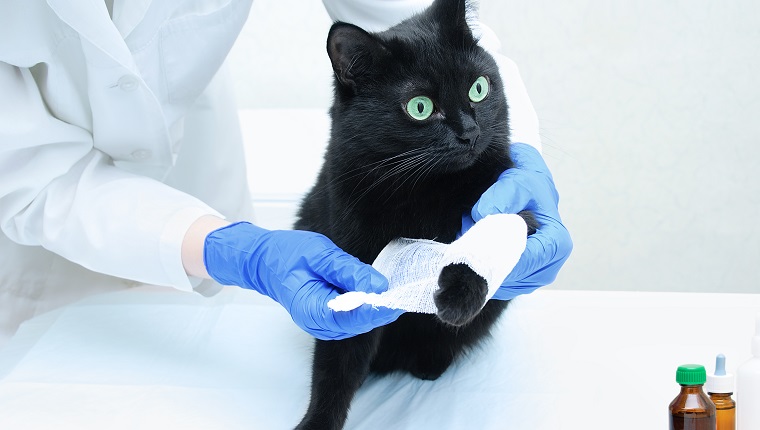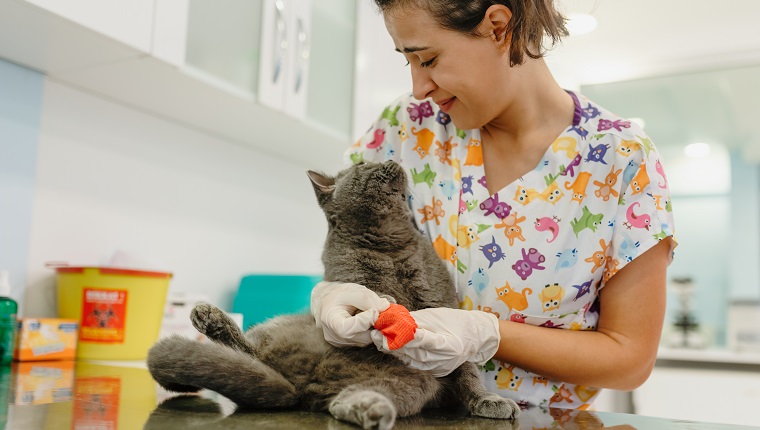Actinomycosis in cats is an infectious bacterial disease that usually enters a cat’s body through cuts and wounds. Vets often call it an “opportunistic infection” for this reason.
While the disease can develop into a serious problem, thankfully, around 90 percent of cats successfully recover if they receive timely medical care.
If you see signs that your feline might be suffering from a bacterial disease, then you must consult your veterinarian for a proper diagnosis and course of treatment. Here’s what you should know about the symptoms, causes, and treatments of actinomycosis in cats.
Symptoms Of Actinomycosis In Cats
Actinomycosis in cats can result in a number of symptoms that often manifest themselves around any wounds or cuts. Some of the most common symptoms include:
- Fever
- Abscesses
- Swollen skin
- Inflamed bones
- Issues with walking steadily
- Discharge or pus around a wound
- Lethargy and issues staying mobile
Causes Of Actinomycosis In Cats

Actinomycosis in cats primarily results from bite wounds from other cats. This is because the bacteria that causes the disease is naturally present in a cat’s mouth.
Along with bites from other cats, periodontal disease is another potential cause. Additionally, cats with compromised immune systems have a higher risk of contracting the infection.
Treatments For Actinomycosis In Cats
If you think that your kitty has developed actinomycosis, then your veterinarian will want to carry out a full physical examination. They’ll also order blood and urine tests, along with an examination of your feline’s electrolytes.
In some cases, X-rays can additionally help confirm diagnosis, along with analyzing bone fragments if needed.
Treatment often involves draining any abscesses that the disease has produced. Taking measures to stop fluid building up around the affected areas is also crucial.
In more extreme cases, your vet might recommend undertaking a surgical process to remove parts of any affected bones.
In most cases, vets will prescribe antibiotics. As ever, if your vet prescribes medication for your cat, then you must follow the recommended frequency and dosage instructions precisely, along with completing the full course of medicine.
Has your cat ever developed actinomycosis? What kinds of symptoms did you see? Tell us all about it in the comments below.




